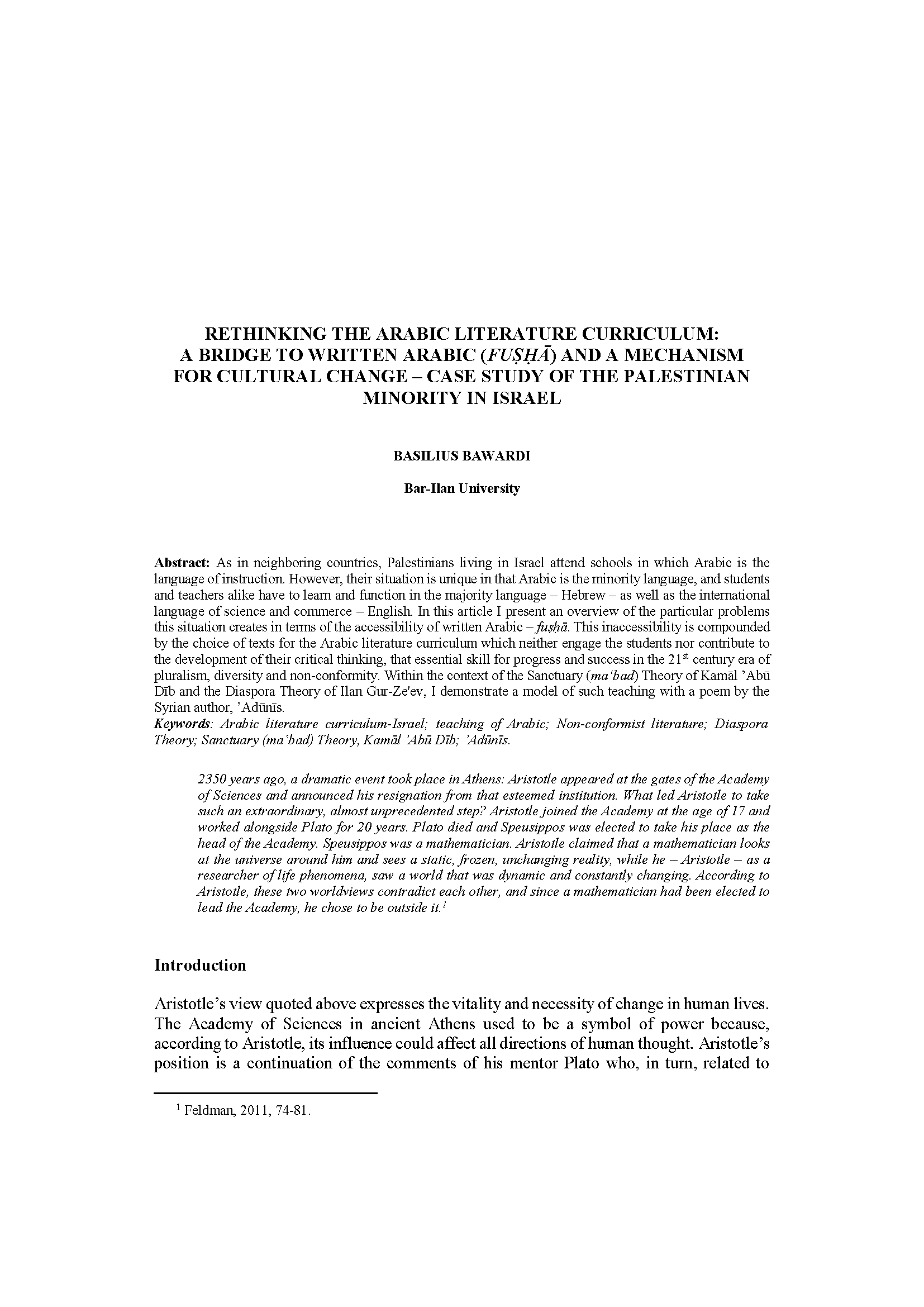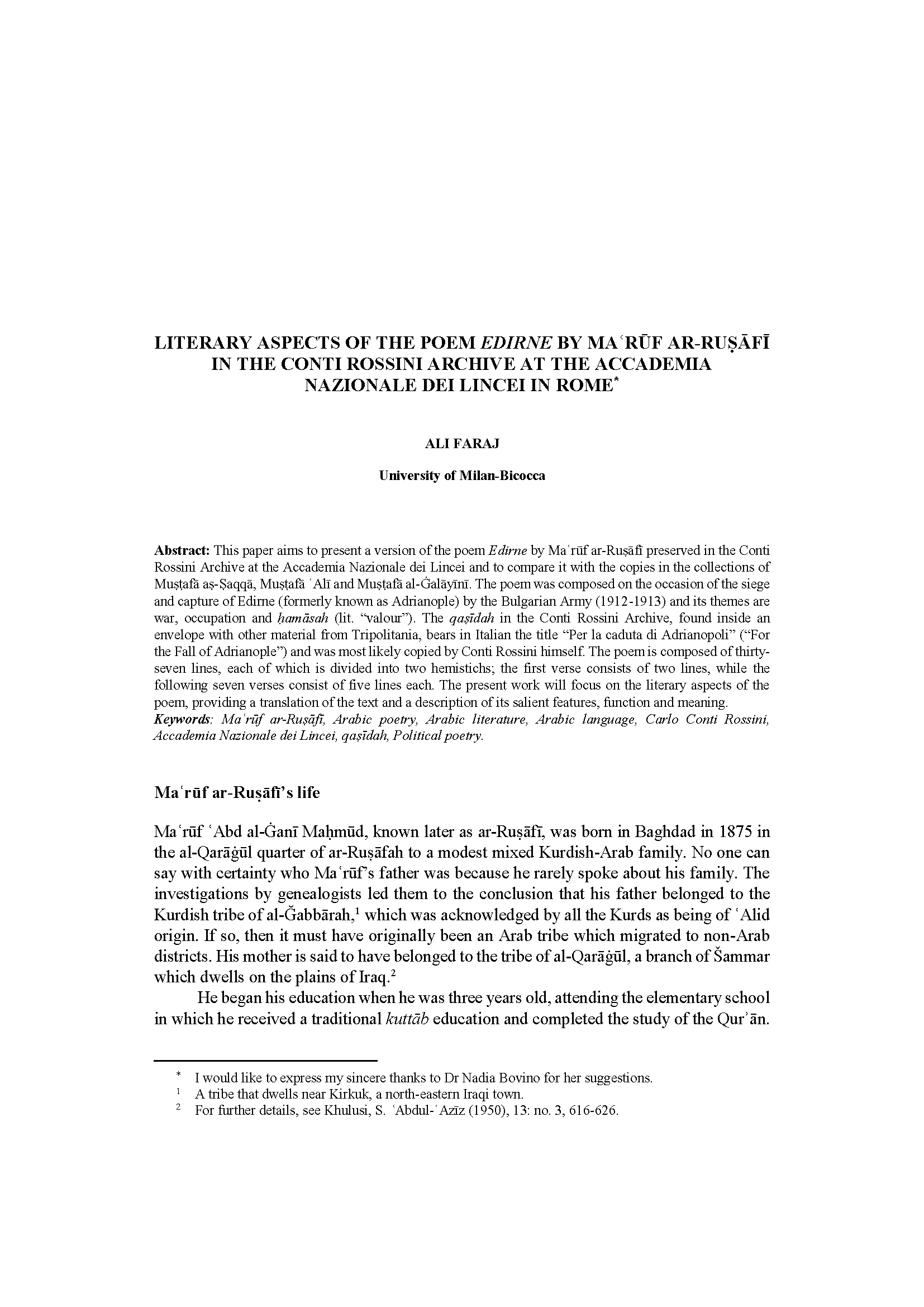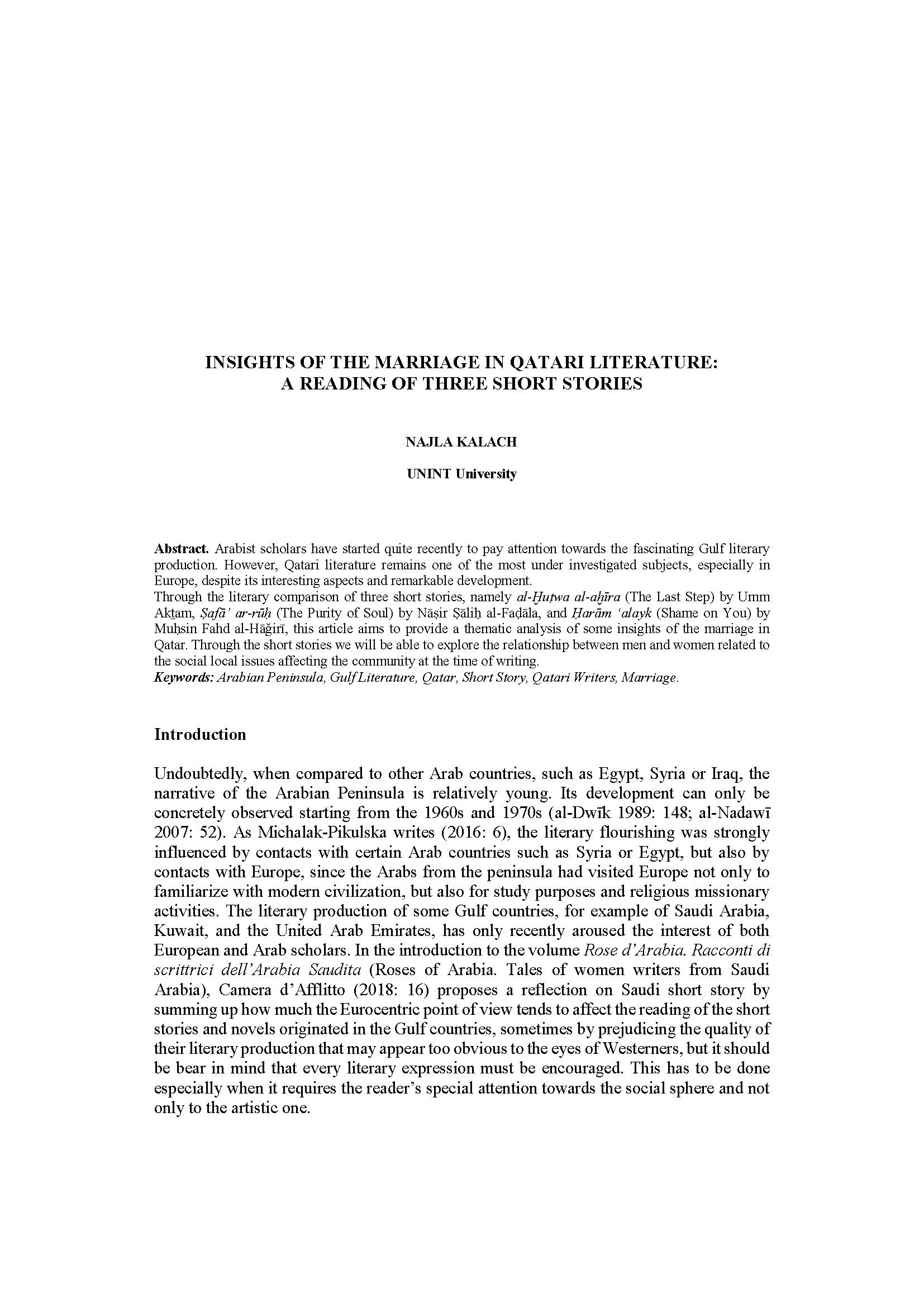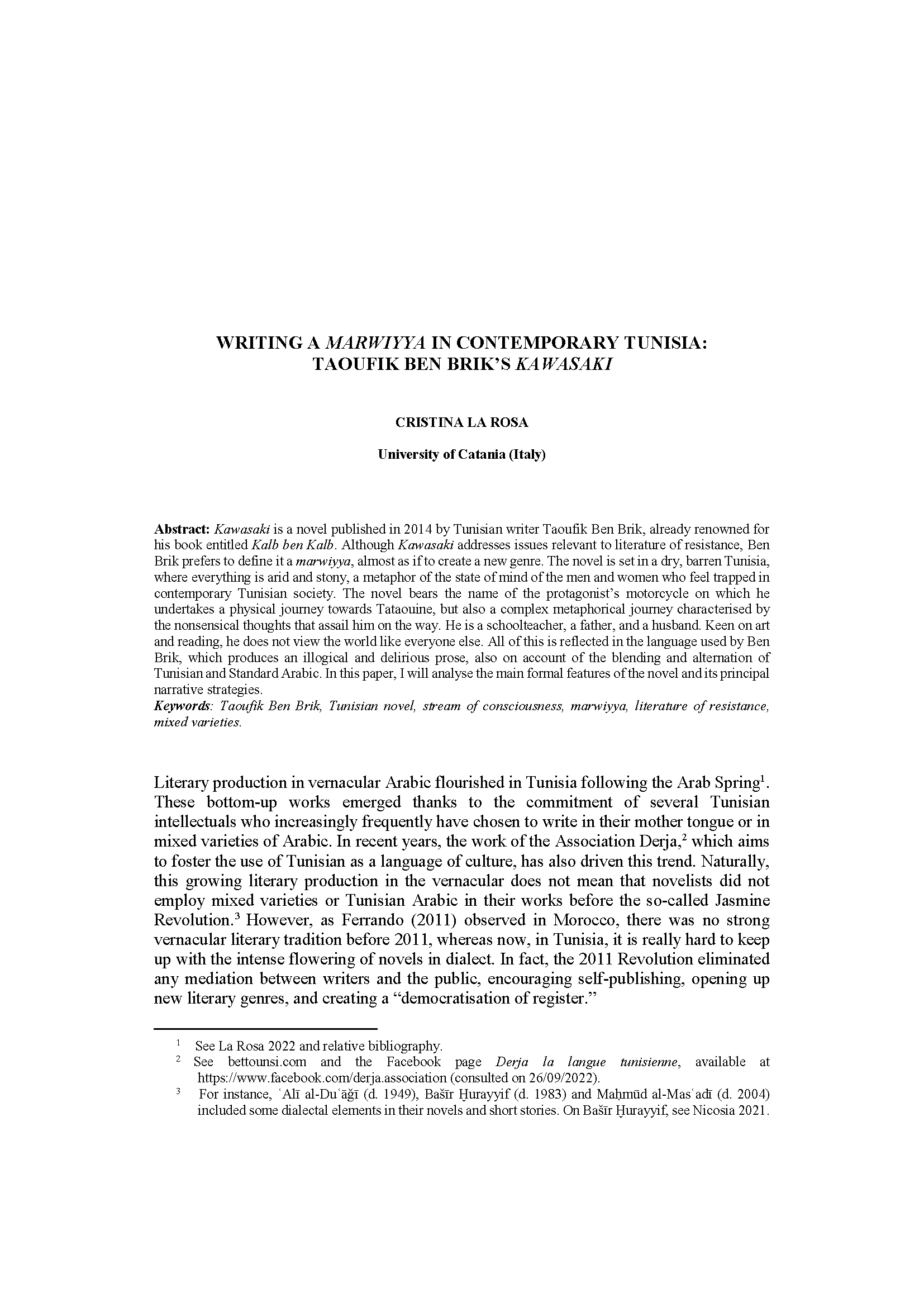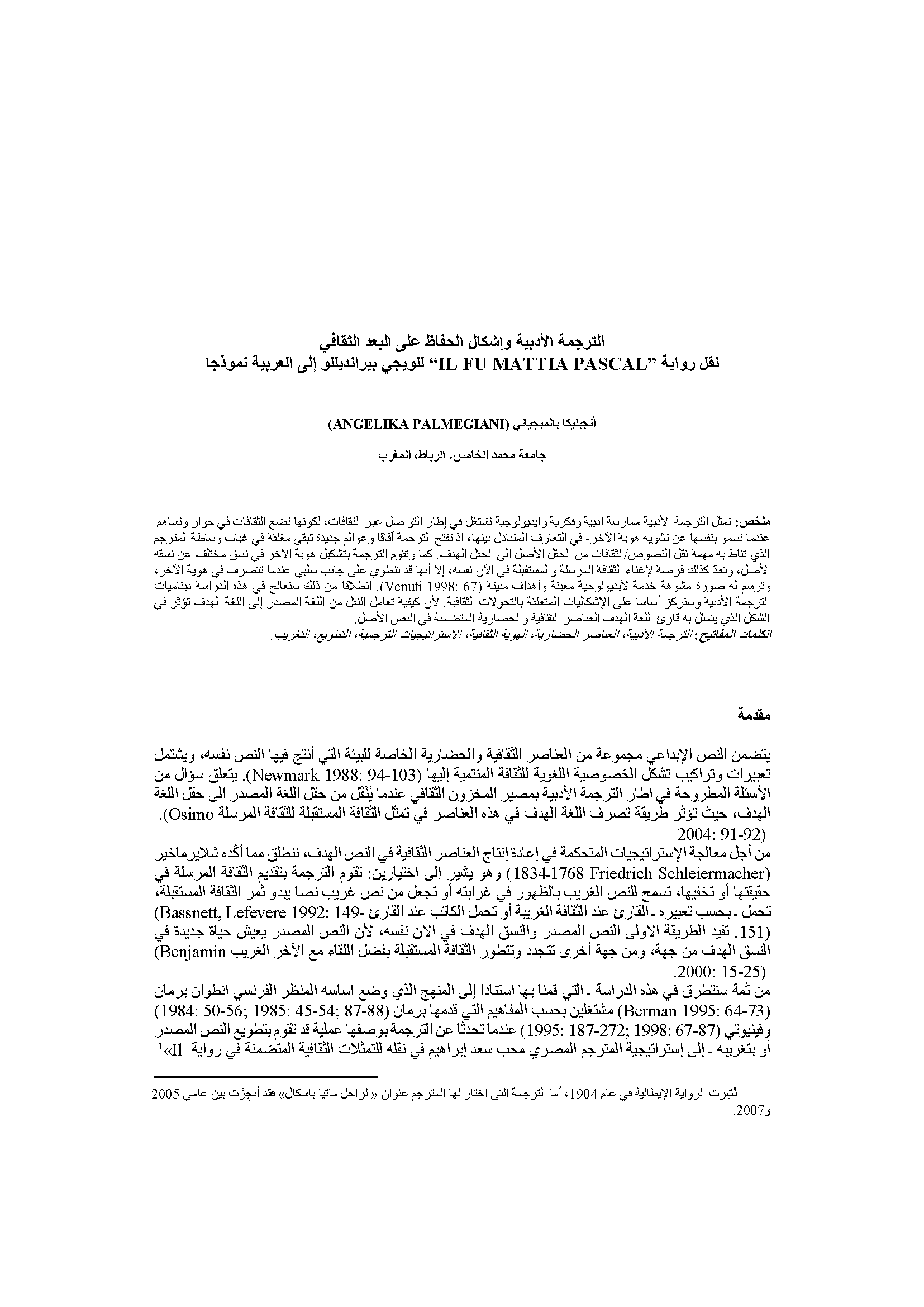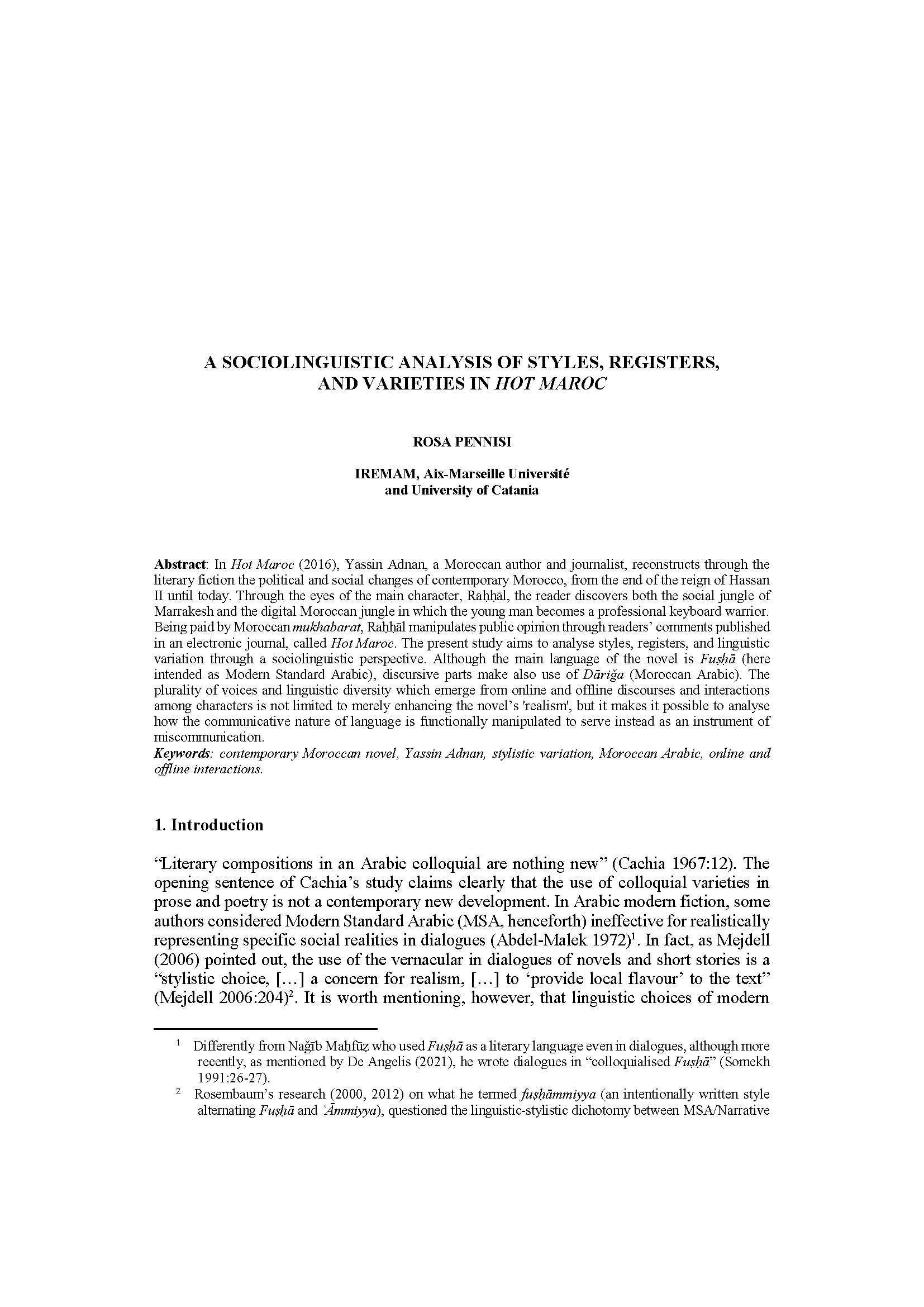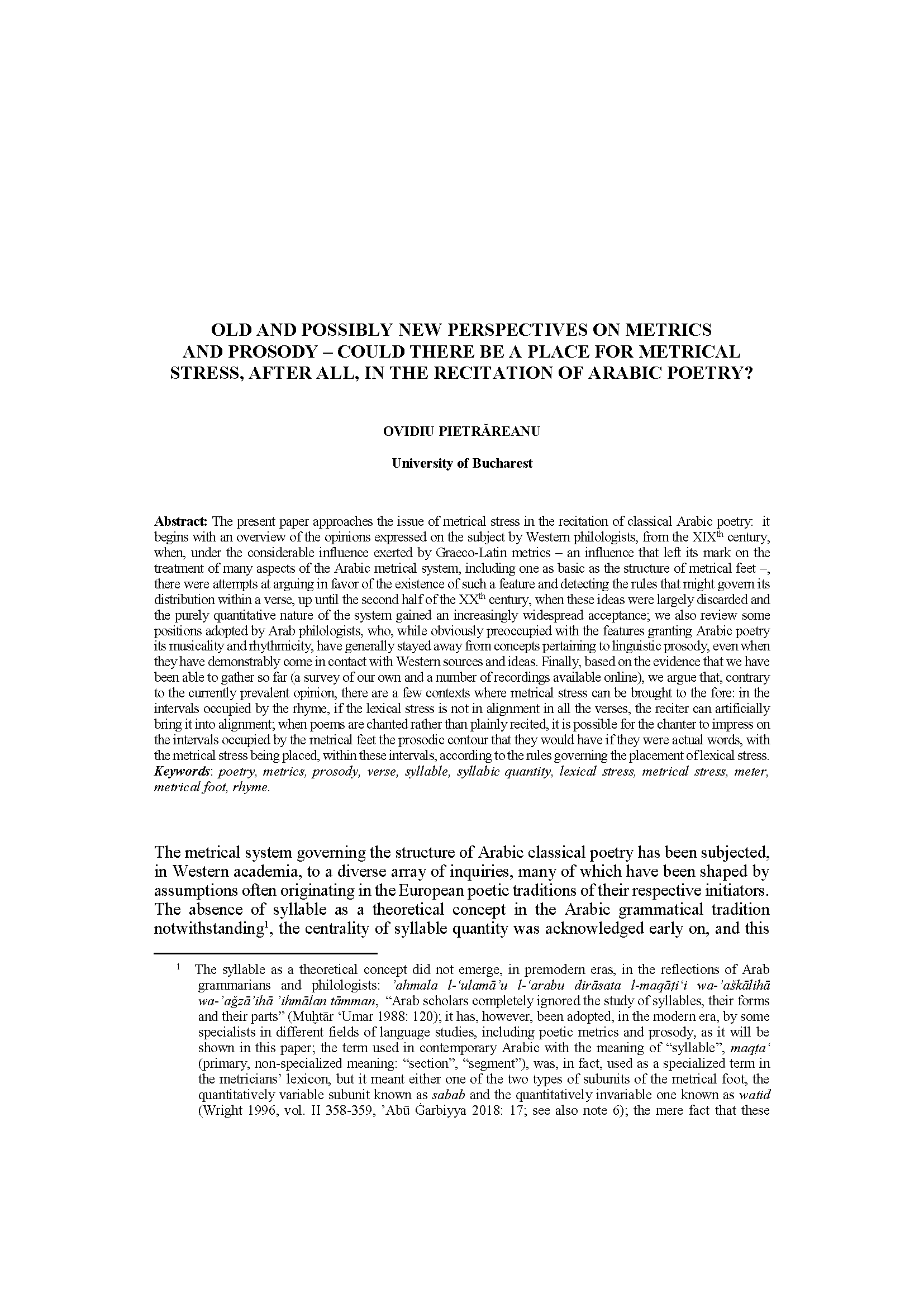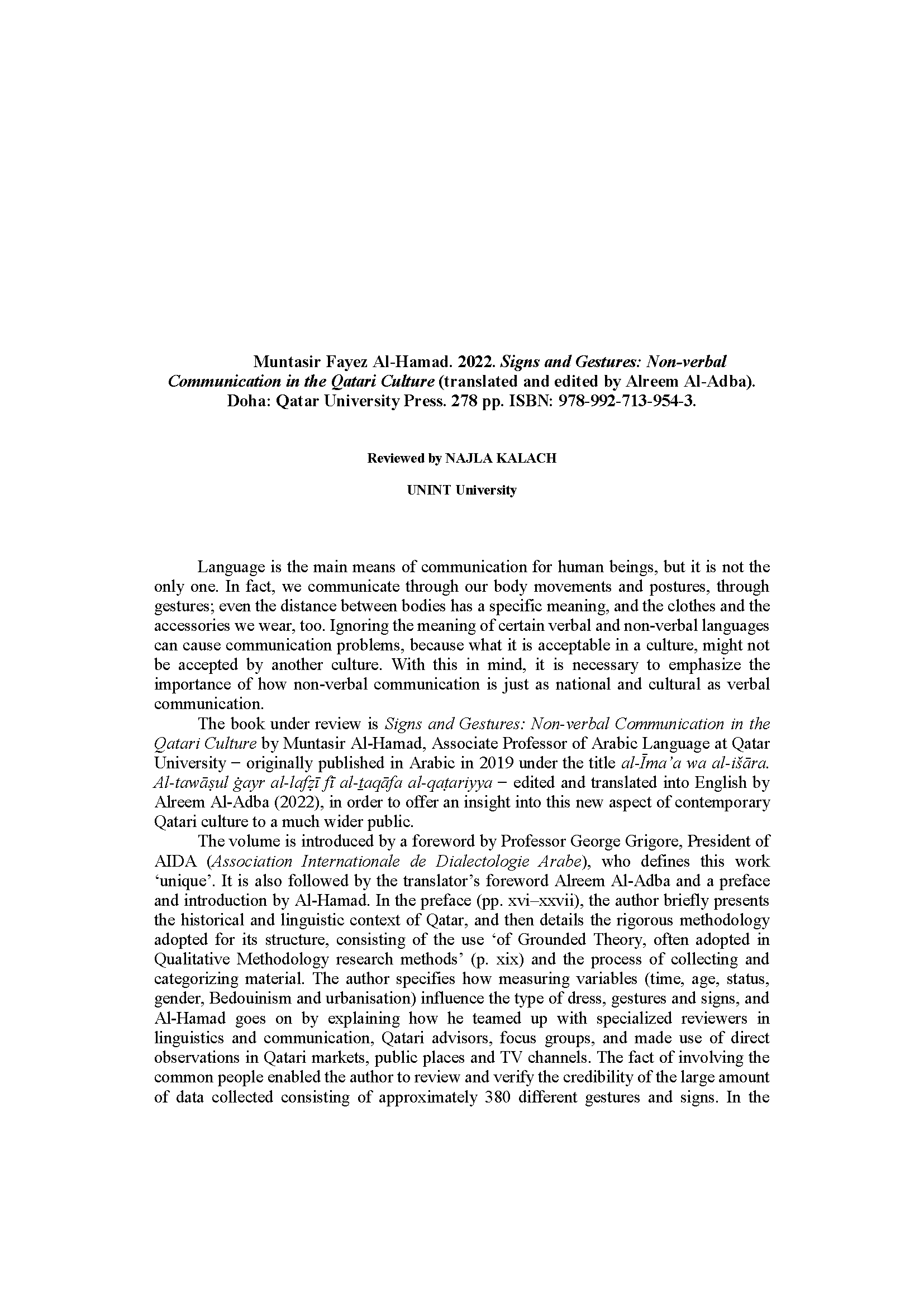Volum 22 Nr. 1 (2024): ROMANO-ARABICA XXII Arabic Literature, Quo Vadis?
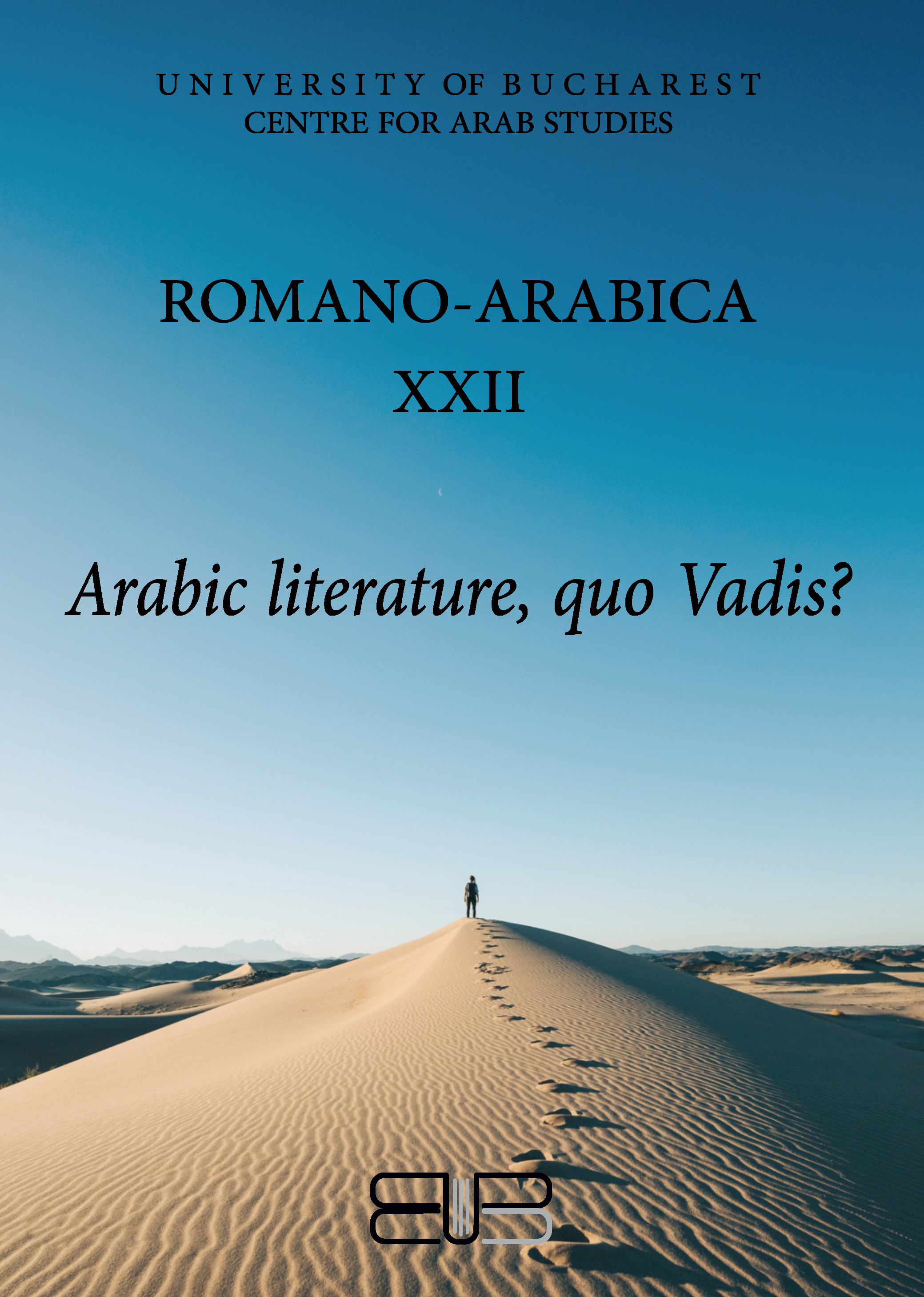
Romano-Arabica is an A-class Academic Journal, according to the Italian National Agency for the Evaluation of Universities and Research Institutes – Anvur, Italia: http://www.anvur.it/en/homepage/
Romano-Arabica is a Category A Academic Journal, according to the Romanian National Council for Scientific Research – CNCS, Romania: http://www.cncs-nrc.ro/publicatii-stiintifice/
Articles
-
RETHINKING THE ARABIC LITERATURE CURRICULUM: A BRIDGE TO WRITTEN ARABIC (FUṢḤĀ) AND A MECHANISM FOR CULTURAL CHANGE CASE STUDY OF THE PALESTINIAN MINORITY IN ISRAEL
Rezumat
As in neighboring countries, Palestinians living in Israel attend schools in which Arabic is the language of instruction. However, their situation is unique in that Arabic is the minority language, and students and teachers alike have to learn and function in the majority language – Hebrew – as well as the international language of science and commerce – English. In this article I present an overview of the particular problems this situation creates in terms of the accessibility of written Arabic – fuṣḥā. This inaccessibility is compounded by the choice of texts for the Arabic literature curriculum which neither engage the students nor contribute to the development of their critical thinking, that essential skill for progress and success in the 21st century era of pluralism, diversity and non-conformity. Within the context of the Sanctuary (ma‘bad) Theory of Kamāl ’Abū Dīb and the Diaspora Theory of Ilan Gur-Ze'ev, I demonstrate a model of such teaching with a poem by the Syrian author, ’Adūnīs.
-
LITERARY ASPECTS OF THE POEM EDIRNE BY MAʿRŪF AR-RUṢĀFĪ IN THE CONTI ROSSINI ARCHIVE AT THE ACCADEMIA NAZIONALE DEI LINCEI IN ROME
Rezumat
This paper aims to present a version of the poem Edirne by Maʿrūf ar-Ruṣāfī preserved in the Conti Rossini Archive at the Accademia Nazionale dei Lincei and to compare it with the copies in the collections of Muṣṭafā aṣ-Ṣaqqā, Muṣṭafā ʿAlī and Muṣṭafā al-Ġalāyīnī. The poem was composed on the occasion of the siege and capture of Edirne (formerly known as Adrianople) by the Bulgarian Army (1912-1913) and its themes are war, occupation and ḥamāsah (lit. “valour”). The qaṣīdah in the Conti Rossini Archive, found inside an envelope with other material from Tripolitania, bears in Italian the title “Per la caduta di Adrianopoli” (“For the Fall of Adrianople”) and was most likely copied by Conti Rossini himself. The poem is composed of thirty-seven lines, each of which is divided into two hemistichs; the first verse consists of two lines, while the following seven verses consist of five lines each. The present work will focus on the literary aspects of the poem, providing a translation of the text and a description of its salient features, function and meaning.
-
INSIGHTS OF THE MARRIAGE IN QATARI LITERATURE: A READING OF THREE SHORT STORIES
Rezumat
Arabist scholars have started quite recently to pay attention towards the fascinating Gulf literary production. However, Qatari literature remains one of the most under investigated subjects, especially in Europe, despite its interesting aspects and remarkable development.
Through the literary comparison of three short stories, namely al-Ḫuṭwa al-aḫīra (The Last Step) by Umm Akṯam, Ṣafā’ ar-rūḥ (The Purity of Soul) by Nāṣir Ṣāliḥ al-Faḍāla, and Ḥarām ʻalayk (Shame on You) by Muḥsin Fahd al-Hāǧirī, this article aims to provide a thematic analysis of some insights of the marriage in Qatar. Through the short stories we will be able to explore the relationship between men and women related to the social local issues affecting the community at the time of writing. -
WRITING A MARWIYYA IN CONTEMPORARY TUNISIA: TAOUFIK BEN BRIK’S KAWASAKI
Rezumat
Kawasaki is a novel published in 2014 by Tunisian writer Taoufik Ben Brik, already renowned for his book entitled Kalb ben Kalb. Although Kawasaki addresses issues relevant to literature of resistance, Ben Brik prefers to define it a marwiyya, almost as if to create a new genre. The novel is set in a dry, barren Tunisia, where everything is arid and stony, a metaphor of the state of mind of the men and women who feel trapped in contemporary Tunisian society. The novel bears the name of the protagonist’s motorcycle on which he undertakes a physical journey towards Tataouine, but also a complex metaphorical journey characterised by the nonsensical thoughts that assail him on the way. He is a schoolteacher, a father, and a husband. Keen on art and reading, he does not view the world like everyone else. All of this is reflected in the language used by Ben Brik, which produces an illogical and delirious prose, also on account of the blending and alternation of Tunisian and Standard Arabic. In this paper, I will analyse the main formal features of the novel and its principal narrative strategies.
-
اﻟﺘﺮﺟﻤﺔ اﻷدﺑﯿﺔ وإﺷﻜﺎل اﻟﺤﻔﺎظ ﻋﻠﻰ اﻟﺒﻌﺪ اﻟﺜﻘﺎﻓﻲ ﻧﻘﻞ رواﯾﺔ ”IL FU MATTIA PASCAL“ ﻟﻠﻮﯾﺠﻲ ﺑﯿﺮاﻧﺪﯾﻠﻠﻮ إﻟﻰ اﻟﻌﺮﺑﯿﺔ ﻧﻤﻮذﺟﺎ
Rezumat
ﺗﻤﺜﻞ اﻟﺘﺮﺟﻤﺔ اﻷدﺑﯿﺔ ﻣﻤﺎرﺳﺔ أدﺑﯿﺔ وﻓﻜﺮﯾﺔ وأﯾﺪﯾﻮﻟﻮﺟﯿﺔ ﺗﺸﺘﻐﻞ ﻓﻲ إطﺎر اﻟﺘﻮاﺻﻞ ﻋﺒﺮ اﻟﺜﻘﺎﻓﺎت، ﻟﻜﻮﻧﮭﺎ ﺗﻀﻊ اﻟﺜﻘﺎﻓﺎت ﻓﻲ ﺣﻮار وﺗﺴﺎھﻢ ﻋﻨﺪﻣﺎ ﺗﺴﻤﻮ ﺑﻨﻔﺴﮭﺎ ﻋﻦ ﺗﺸﻮﯾﮫ ھﻮﯾﺔ اﻵﺧﺮ- ﻓﻲ اﻟﺘﻌﺎرف اﻟﻤﺘﺒﺎدل ﺑﯿﻨﮭﺎ، إذ ﺗﻔﺘﺢ اﻟﺘﺮﺟﻤﺔ آﻓﺎﻗﺎ وﻋﻮاﻟﻢ ﺟﺪﯾﺪة ﺗﺒﻘﻰ ﻣﻐﻠﻘﺔ ﻓﻲ ﻏﯿﺎب وﺳﺎطﺔ اﻟﻤﺘﺮﺟﻢ اﻟﺬي ﺗﻨﺎط ﺑﮫ ﻣﮭﻤﺔ ﻧﻘﻞ اﻟﻨﺼﻮص/اﻟﺜﻘﺎﻓﺎت ﻣﻦ اﻟﺤﻘﻞ اﻷﺻﻞ إﻟﻰ اﻟﺤﻘﻞ اﻟﮭﺪف. ﻛﻤﺎ وﺗﻘﻮم اﻟﺘﺮﺟﻤﺔ ﺑﺘﺸﻜﯿﻞ ھﻮﯾﺔ اﻵﺧﺮ ﻓﻲ ﻧﺴﻖ ﻣﺨﺘﻠﻒ ﻋﻦ ﻧﺴﻘﮫ اﻷﺻﻞ، وﺗﻌﺪ ّ ﻛﺬﻟﻚ ﻓﺮﺻﺔ ﻹﻏﻨﺎء اﻟﺜﻘﺎﻓﺔ اﻟﻤﺮﺳﻠﺔ واﻟﻤﺴﺘﻘﺒﻠﺔ ﻓﻲ اﻵن ﻧﻔﺴﮫ، إﻻ أﻧﮭﺎ ﻗﺪ ﺗﻨﻄﻮي ﻋﻠﻰ ﺟﺎﻧﺐ ﺳﻠﺒﻲ ﻋﻨﺪﻣﺎ ﺗﺘﺼﺮف ﻓﻲ ھﻮﯾﺔ اﻵﺧﺮ، وﺗﺮﺳﻢ ﻟﮫ ﺻﻮرة ﻣﺸﻮھﺔ ﺧﺪﻣﺔ ﻷﯾﺪﯾﻮﻟﻮﺟﯿﺔ ﻣﻌﯿﻨﺔ وأھﺪاف ﻣﺒﯿﺘﺔ )1998: 67 Venuti(. اﻧﻄﻼﻗﺎ ﻣﻦ ذﻟﻚ ﺳﻨﻌﺎﻟﺞ ﻓﻲ ھﺬه اﻟﺪراﺳﺔ دﯾﻨﺎﻣﯿﺎت اﻟﺘﺮﺟﻤﺔ اﻷدﺑﯿﺔ وﺳﻨﺮﻛﺰ أﺳﺎﺳﺎ ﻋﻠﻰ اﻹﺷﻜﺎﻟﯿﺎت اﻟﻤﺘﻌﻠﻘﺔ ﺑﺎﻟﺘﺤﻮﻻت اﻟﺜﻘﺎﻓﯿﺔ. ﻷن ﻛﯿﻔﯿﺔ ﺗﻌﺎﻣﻞ اﻟﻨﻘﻞ ﻣﻦ اﻟﻠﻐﺔ اﻟﻤﺼﺪر إﻟﻰ اﻟﻠﻐﺔ اﻟﮭﺪف ﺗﺆﺛﺮ ﻓﻲ ﻟﺸﻜﻞ اﻟﺬي ﯾﺘﻤﺜﻞ ﺑﮫ ﻗﺎرئ اﻟﻠﻐﺔ اﻟﮭﺪف اﻟﻌﻨﺎﺻﺮ اﻟﺜﻘﺎﻓﯿﺔ واﻟﺤﻀﺎرﯾﺔ اﻟﻤﺘﻀﻤﻨﺔ ﻓﻲ اﻟﻨﺺ اﻷﺻﻞ.
-
A SOCIOLINGUISTIC ANALYSIS OF STYLES, REGISTERS, AND VARIETIES IN HOT MAROC
Rezumat
In Hot Maroc (2016), Yassin Adnan, a Moroccan author and journalist, reconstructs through the literary fiction the political and social changes of contemporary Morocco, from the end of the reign of Hassan II until today. Through the eyes of the main character, Raḥḥāl, the reader discovers both the social jungle of Marrakesh and the digital Moroccan jungle in which the young man becomes a professional keyboard warrior. Being paid by Moroccan mukhabarat, Raḥḥāl manipulates public opinion through readers’ comments published in an electronic journal, called Hot Maroc. The present study aims to analyse styles, registers, and linguistic variation through a sociolinguistic perspective. Although the main language of the novel is Fuṣḥā (here intended as Modern Standard Arabic), discursive parts make also use of Dāriǧa (Moroccan Arabic). The plurality of voices and linguistic diversity which emerge from online and offline discourses and interactions among characters is not limited to merely enhancing the novel’s 'realism', but it makes it possible to analyse how the communicative nature of language is functionally manipulated to serve instead as an instrument of miscommunication.
-
OLD AND POSSIBLY NEW PERSPECTIVES ON METRICS AND PROSODY – COULD THERE BE A PLACE FOR METRICAL STRESS, AFTER ALL, IN THE RECITATION OF ARABIC POETRY?
Rezumat
The present paper approaches the issue of metrical stress in the recitation of classical Arabic poetry: it begins with an overview of the opinions expressed on the subject by Western philologists, from the XIXth century, when, under the considerable influence exerted by Graeco-Latin metrics – an influence that left its mark on the treatment of many aspects of the Arabic metrical system, including one as basic as the structure of metrical feet –, there were attempts at arguing in favor of the existence of such a feature and detecting the rules that might govern its distribution within a verse, up until the second half of the XXth century, when these ideas were largely discarded and the purely quantitative nature of the system gained an increasingly widespread acceptance; we also review some positions adopted by Arab philologists, who, while obviously preoccupied with the features granting Arabic poetry its musicality and rhythmicity, have generally stayed away from concepts pertaining to linguistic prosody, even when they have demonstrably come in contact with Western sources and ideas. Finally, based on the evidence that we have been able to gather so far (a survey of our own and a number of recordings available online), we argue that, contrary to the currently prevalent opinion, there are a few contexts where metrical stress can be brought to the fore: in the intervals occupied by the rhyme, if the lexical stress is not in alignment in all the verses, the reciter can artificially bring it into alignment; when poems are chanted rather than plainly recited, it is possible for the chanter to impress on the intervals occupied by the metrical feet the prosodic contour that they would have if they were actual words, with the metrical stress being placed, within these intervals, according to the rules governing the placement of lexical stress.
Miscellanea
-
COUNT/MASS NOUNS AND DEFINITENESS IN PALESTINIAN ARABIC HERITAGE SPEAKERS OF ENGLISH
Rezumat
Definiteness correlates to a cluster of cross-linguistic semantic scalar variables, among which is countability (count/mass nouns distinction). Count and mass nouns are distinguished by definiteness markers in English, but not in Arabic. Middleton et al. (2004) proved that countability is related to cognitive individuation of discrete bounded entities. Lucy and Gaskins (2001) demonstrated that the presence of count/mass distinction directly correlates with attention to the shape rather than the substance of individual entities. I analyze linguistic and cognitive effects of the Palestinian Arabic (PA) and English (EN) definiteness systems and cognitive individuation biases in 15 PA heritage speakers of English (PAHSEs, aged 18-25).
Heritage speakers understand but cannot speak a familiar heritage language (Polinsky, 2018). PA is sociogeographically and cognitively peripheral in PAHSEs’ world experience. Fifteen PA and EN native speakers (aged 18-25) represent control groups. Linguistic experiments (Liu and Gleason, 2002) tested definiteness grammar of nouns with different countability properties. Semantic and cognitive experiments (Iwasaki et al., 2010) tested effects of PA countability and individuation parameters in PAHSEs. PA
definiteness does not significantly affect PAHSEs’ grammatical competence. PAHSEs’ semantic and cognitive results converge with those of the PA control group, showing bedrock effects of heritage PA.
Book Reviews
-
Muntasir Fayez Al-Hamad. 2022. Signs and Gestures: Non-verbal Communication in the Qatari Culture (translated and edited by Alreem Al-Adba). Doha: Qatar University Press. 278 pp. ISBN: 978-992-713-954-3
Rezumat
Language is the main means of communication for human beings, but it is not the only one. In fact, we communicate through our body movements and postures, through gestures; even the distance between bodies has a specific meaning, and the clothes and the accessories we wear, too. Ignoring the meaning of certain verbal and non-verbal languages can cause communication problems, because what it is acceptable in a culture, might not be accepted by another culture. With this in mind, it is necessary to emphasize the importance of how non-verbal communication is just as national and cultural as verbal communication.

